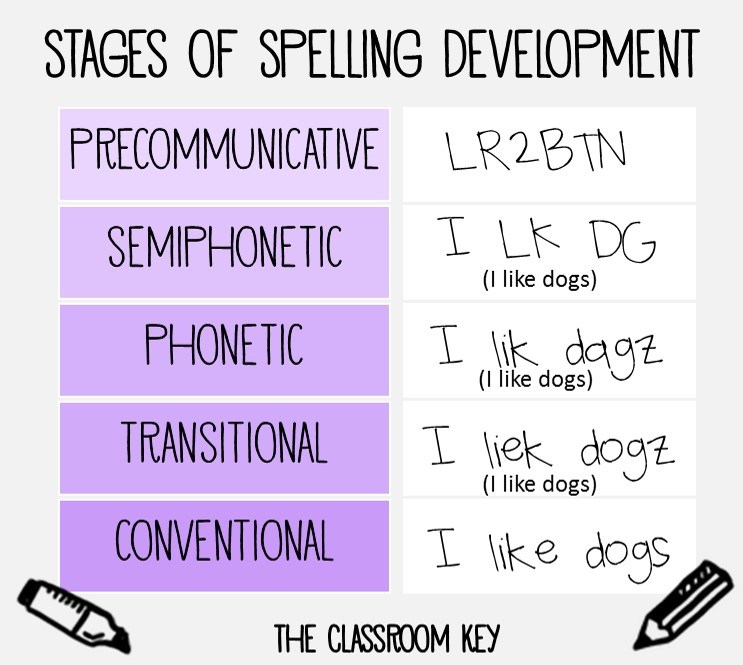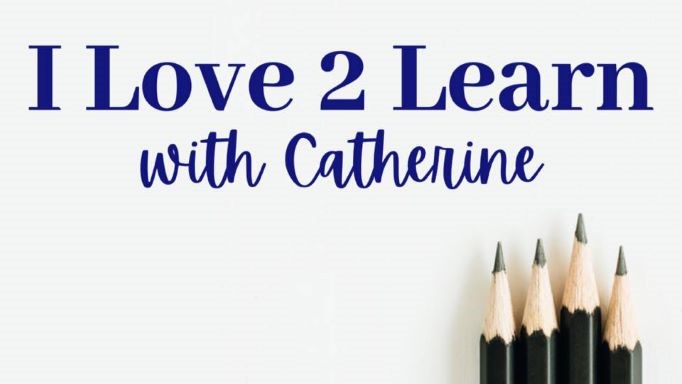Stages of Spelling Development
Monday, September 26, 2022 by Catherine Gilliland | Spelling
 I am always amazed that I can observe one child who is learning to write and spell in one place and time and another child in another location and time and the two move through the same progression in the development of their skills! Like linguist Charles Read (1975), I have observed that even pre-reading children begin spelling words by inventing their own spellings based upon their current understanding of the sound contained in the word they are attempting to spell and the letter sounds about which they currently have knowledge. As their knowledge base expands children move gradually through the five stages of learning to spell.
I am always amazed that I can observe one child who is learning to write and spell in one place and time and another child in another location and time and the two move through the same progression in the development of their skills! Like linguist Charles Read (1975), I have observed that even pre-reading children begin spelling words by inventing their own spellings based upon their current understanding of the sound contained in the word they are attempting to spell and the letter sounds about which they currently have knowledge. As their knowledge base expands children move gradually through the five stages of learning to spell.
Charles Read concluded that, by and large, "learning to spell is not a matter of memorizing words, but a developmental process that culminates in a much greater understanding of English spelling than simple relationships between speech sounds and their graphic representations."
J. Richard Gentry (1982), using Read's research as a foundation, describes five stages: precommunicative, semiphonetic, phonetic, transitional, and correct.
-
Precommunicative stage
The child uses symbols from the alphabet but shows no knowledge of letter-sound correspondences. The child may also lack knowledge of the entire alphabet, the distinction between upper- and lower-case letters, and the left-to-right direction of English orthography. -
Semiphonetic stage
The child begins to understand letter-sound correspondence and that sounds are assigned to letters. At this stage, the child often employs rudimentary logic, using single letters, for example, to represent words, sounds, and syllables (e.g., U for you). -
Phonetic stage
The child uses a letter or group of letters to represent every speech sound that they hear in a word. Although some of their choices do not conform to conventional English spelling, they are systematic and easily understood. Examples are KOM for come and EN for in. -
Transitional stage
The speller begins to assimilate the conventional alternative for representing sounds, moving from a dependence on phonology (sound) for representing words to a reliance on visual representation and an understanding of the structure of words. Some examples are EGUL for eagle and HIGHEKED for hiked. -
Correct stage [or Conventional]
The speller knows the English orthographic system and its basic rules. The correct speller fundamentally understands how to deal with such things as prefixes and suffixes, silent consonants, alternative spellings, and irregular spellings. A large number of learned words are accumulated, and the speller recognizes incorrect forms. The child's generalizations about spelling and knowledge of exceptions are usually correct.
Gentry, J. Richard. "An Analysis of Developmental Spelling in GNYS AT WRK." An Analysis of Developmental Spelling in "GNYS AT WRK" on JSTOR, 1982.
Read, Charles. CHILDREN'S CATEGORIZATION OF SPEECH SOUNDS IN ENGLISH. Urbana, IL: ed112426.tif.pdf, 1975.
For more information see Reading Rockets "Invented Spelling and Spelling Development".


